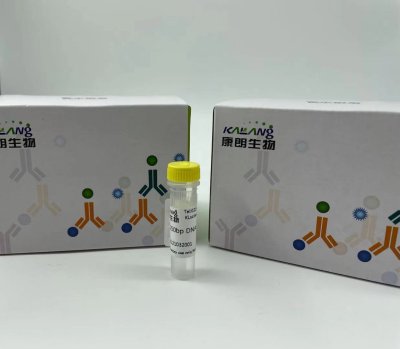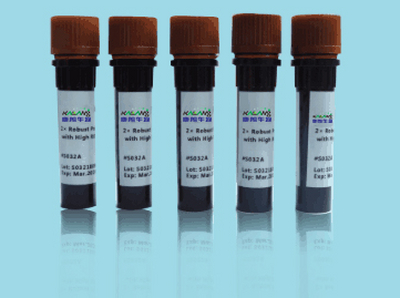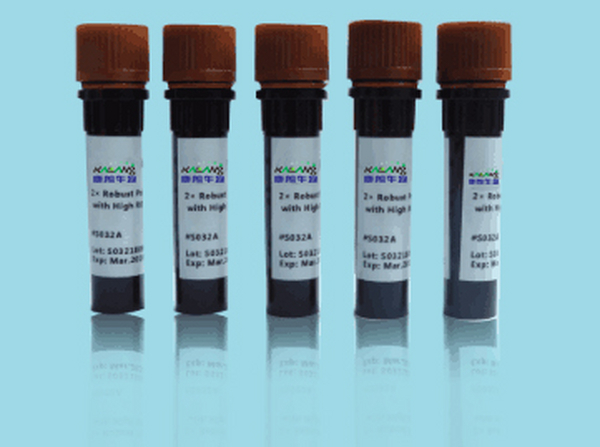QQ:3002763590


客服电话:021-61998208
IDI1 rabbit Polyclonal Antibody
IDI1抗体
IDI1抗体应用:WB 1:500-2000 IDI1 encodes a peroxisomally-localized enzyme that catalyzes the interconversion of isopentenyl diphosphate (IPP) to its highly electrophilic isomer, dimethylallyl diphosphate (DMAPP), which are the substrates for the successive reaction that results in the synthesis of farnesyl diphosphate and, ultimately, cholesterol. It has been shown in peroxisomal deficiency diseases such as Zellweger syndrome and neonatal adrenoleukodystrophy that there is reduction in IPP isomerase activity. [provided by RefSeq, Jul 2008],
IER5 rabbit Polyclonal Antibody
IER5抗体
IER5抗体应用:WB 1:500-2000 This gene encodes a protein that is similar to other immediate early response proteins. In the mouse, a similar gene may play an important role in mediating the cellular response to mitogenic signals. Studies in rats found the expression of a similar gene to be increased after waking and sleep deprivation. [provided by RefSeq, Jul 2008],
IF3 rabbit Polyclonal Antibody
IF3抗体
IF3抗体应用:Western Blot: 1/500 - 1/2000. Immunohistochemistry: 1/100 - 1/300. ELISA: 1/40000. mitochondrial translational initiation factor 3(MTIF3) Homo sapiens This gene encodes a translation initiation factor that is involved in mitochondrial protein synthesis. Polymorphism in this gene is associated with the onset of Parkinson's disease. Alternate splicing results in multiple transcript variants. A pseudogene of this gene is found on chromosome 5. [provided by RefSeq, Oct 2009],
I-FABP rabbit Polyclonal Antibody
I-FABP抗体
I-FABP抗体应用:WB 1:500-2000,IHC-p 1:500-200, ELISA 1:10000-20000 fatty acid binding protein 2(FABP2) Homo sapiens The intracellular fatty acid-binding proteins (FABPs) belong to a multigene family with nearly twenty identified members. FABPs are divided into at least three distinct types, namely the hepatic-, intestinal- and cardiac-type. They form 14-15 kDa proteins and are thought to participate in the uptake, intracellular metabolism and/or transport of long-chain fatty acids. They may also be responsible in the modulation of cell growth and proliferation. Intestinal fatty acid-binding protein 2 gene contains four exons and is an abundant cytosolic protein in small intestine epithelial cells. This gene has a polymorphism at codon 54 that identified an alanine-encoding allele and a threonine-encoding allele. Thr-54 protein is associated with increased fat oxidation and insulin resistance. [provided by RefSeq, Jul 2008],
IFFO1 rabbit Polyclonal Antibody
IFFO1抗体
IFFO1抗体应用:WB 1:500-2000 This gene is a member of the intermediate filament family. Intermediate filaments are proteins which are primordial components of the cytoskeleton and nuclear envelope. The proteins encoded by the members of this gene family are evolutionarily and structurally related but have limited sequence homology, with the exception of the central rod domain. Multiple alternatively spliced transcript variants encoding different isoforms have been found for this gene. [provided by RefSeq, Jul 2010],
IFI-16 rabbit Polyclonal Antibody
IFI-16抗体
IFI-16抗体应用:Western Blot: 1/500 - 1/2000. ELISA: 1/40000. interferon gamma inducible protein 16(IFI16) Homo sapiens This gene encodes a member of the HIN-200 (hematopoietic interferon-inducible nuclear antigens with 200 amino acid repeats) family of cytokines. The encoded protein contains domains involved in DNA binding, transcriptional regulation, and protein-protein interactions. The protein localizes to the nucleoplasm and nucleoli, and interacts with p53 and retinoblastoma-1. It modulates p53 function, and inhibits cell growth in the Ras/Raf signaling pathway. Alternatively spliced transcript variants encoding different isoforms have been found for this gene. [provided by RefSeq, Apr 2011],
IARS2 rabbit Polyclonal Antibody
IARS2抗体
IARS2抗体应用:Western Blot: 1/500 - 1/2000. Immunohistochemistry: 1/100 - 1/300. Immunofluorescence: 1/200 - 1/1000. ELISA: 1/20000. isoleucyl-tRNA synthetase 2, mitochondrial(IARS2) Homo sapiens Aminoacyl-tRNA synthetases catalyze the aminoacylation of tRNA by their cognate amino acid. Because of their central role in linking amino acids with nucleotide triplets contained in tRNAS, aminoacyl-tRNA synthetases are thought to be among the first proteins that appeared in evolution. Two forms of isoleucine-tRNA synthetase exist, a cytoplasmic form and a mitochondrial form. This gene encodes the mitochondrial isoleucine-tRNA synthetase which belongs to the class-I aminoacyl-tRNA synthetase family. [provided by RefSeq, Dec 2014],
ICAD rabbit Polyclonal Antibody
ICAD抗体
ICAD抗体应用:Western Blot: 1/500 - 1/2000. Immunohistochemistry: 1/100 - 1/300. Immunofluorescence: 1/200 - 1/1000. ELISA: 1/20000. DNA fragmentation factor subunit alpha(DFFA) Homo sapiens Apoptosis is a cell death process that removes toxic and/or useless cells during mammalian development. The apoptotic process is accompanied by shrinkage and fragmentation of the cells and nuclei and degradation of the chromosomal DNA into nucleosomal units. DNA fragmentation factor (DFF) is a heterodimeric protein of 40-kD (DFFB) and 45-kD (DFFA) subunits. DFFA is the substrate for caspase-3 and triggers DNA fragmentation during apoptosis. DFF becomes activated when DFFA is cleaved by caspase-3. The cleaved fragments of DFFA dissociate from DFFB, the active component of DFF. DFFB has been found to trigger both DNA fragmentation and chromatin condensation during apoptosis. Two alternatively spliced transcript variants encoding distinct isoforms have been found for this gene. [provided by RefSeq, Jul 200
ICAM-1 rabbit Polyclonal Antibody
ICAM-1抗体
ICAM-1抗体应用:Western Blot: 1/500 - 1/2000. ELISA: 1/10000. intercellular adhesion molecule 1(ICAM1) Homo sapiens This gene encodes a cell surface glycoprotein which is typically expressed on endothelial cells and cells of the immune system. It binds to integrins of type CD11a / CD18, or CD11b / CD18 and is also exploited by Rhinovirus as a receptor. [provided by RefSeq, Jul 2008],
ICAM-2 rabbit Polyclonal Antibody
ICAM-2抗体
ICAM-2抗体应用:Western Blot: 1/500 - 1/2000. ELISA: 1/10000. intercellular adhesion molecule 2(ICAM2) Homo sapiens The protein encoded by this gene is a member of the intercellular adhesion molecule (ICAM) family. All ICAM proteins are type I transmembrane glycoproteins, contain 2-9 immunoglobulin-like C2-type domains, and bind to the leukocyte adhesion LFA-1 protein. This protein may play a role in lymphocyte recirculation by blocking LFA-1-dependent cell adhesion. It mediates adhesive interactions important for antigen-specific immune response, NK-cell mediated clearance, lymphocyte recirculation, and other cellular interactions important for immune response and surveillance. Several transcript variants encoding the same protein have been found for this gene. [provided by RefSeq, Jul 2008],
最新动态
-

Anti-GNGT1 KL20092-001(50ul)
2021-10-11 -

Anti-GNGT1 antibody(50ul) KL20093-001
2021-10-11 -

MUC5AC (PT2058) mouse Monoclonal Antibody
2021-01-06 -

mOrange mouse Monoclonal Antibody(Mix)
2021-01-05
热门标签
- Histone H3 rabbit Polyclonal Antibody Histone H3抗体
- EGFR rabbit Polyclonal Antibody EGFR抗体
- Cy3 Conjugated
- AbFluor™ 555 Conjugated
- AbFluor™ 680 Conjugated
- AbFluor™ 350 Conjugated
- AbFluor™ 647 Conjugated
- AbFluor™ 594 Conjugated
- AbFluor™ 405 Conjugated
- Cy5 Conjugated
- AbFluor™ 488 Conjugated
- Cyclophilin B抗体 Cyclophilin B Monoclonal Antibody(2B10)
- COX IV抗体 COX IV Monoclonal Antibody(6C8)
- PCNA抗体 PCNA Monoclonal Antibody(12D10)
- FAK rabbit Polyclonal Antibody FAK抗体
邮箱:3002763590@qq.com
电话:021-61998208

扫码关注微信公众号






